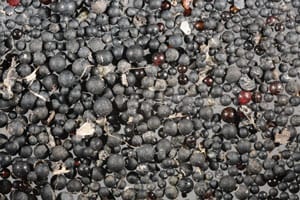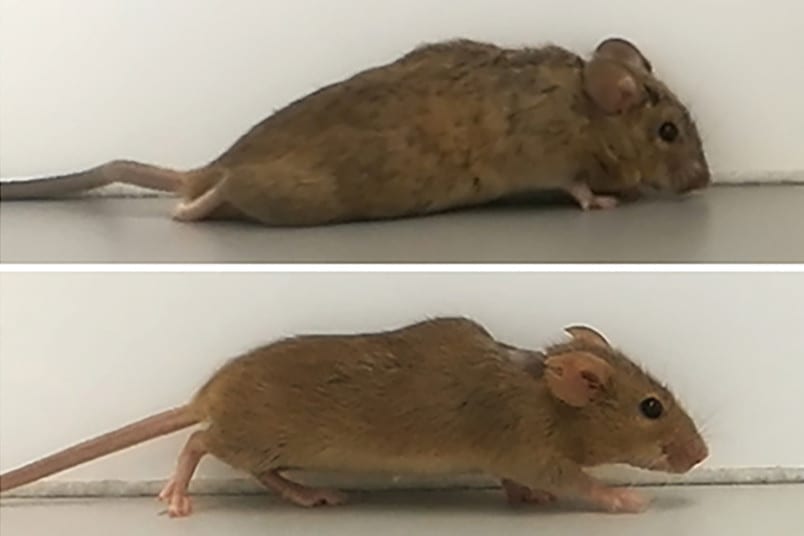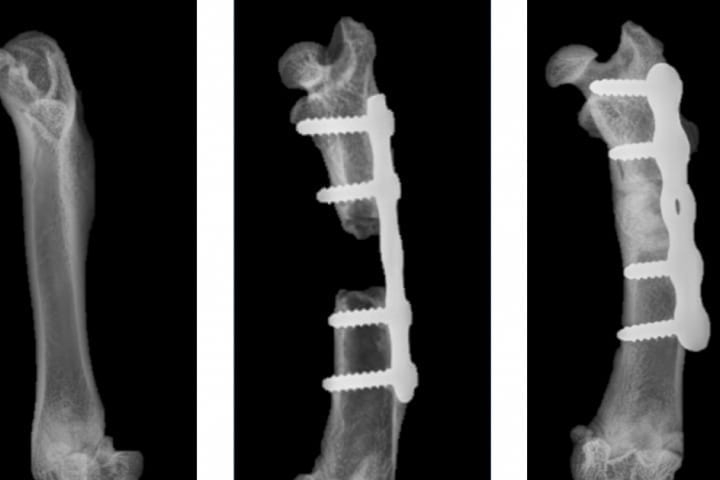
Electro-analytical system used to identify appropriate electrodes for anodic oxidation processes
Professor Patrick Drogui’s INRS research team has developed a process for the electrolytic treatment of wastewater that degrades microplastics at the source.The results of this research have been published in the Environmental Pollution journal.
Wastewater can carry high concentrations of microplastics into the environment. These small particles of less than 5 mm can come from our clothes, usually as microfibers. Professor Patrick Drogui, who led the study, points out there are currently no established degradation methods to handle this contaminant during wastewater treatment. Some techniques already exist, but they often involve physical separation as a means of filtering pollutants. These technologies do not degrade them, which requires additional work to manage the separated particles.
Therefore, the research team decided to degrade the particles by electrolytic oxidation, a process not requiring the addition of chemicals. “Using electrodes, we generate hydroxyl radicals (·OH) to attack microplastics. This process is environmentally friendly because it breaks them down into CO2 and water molecules, which are non-toxic to the ecosystem,” explains the researcher. The electrodes used in this process are more expensive than iron or steel electrodes, which degrade over time, but can be reused for several years.
An effective treatment
Professor Drogui envisions the use of this technology at the exit of commercial laundries, a potential source of microplastics release into the environment. “When this commercial laundry water arrives at the wastewater treatment plant, it is mixed with large quantities of water, the pollutants are diluted and therefore more difficult to degrade. Conversely, by acting at the source, i.e., at the laundry, the concentration of microplastics is higher (per litre of water), thus more accessible for electrolytic degradation,” explains the specialist in electrotechnology and water treatment.
Laboratory tests conducted on water artificially contaminated with polystyrene showed a degradation efficiency of 89%. The team plans to move on to experiments on real water. “Real water contains other materials that can affect the degradation process, such as carbonates and phosphates, which can trap radicals and reduce the performance of the oxidation process,” says Professor Drogui, scientific director of the Laboratory of Environmental Electrotechnologies and Oxidative Processes (LEEPO).
If the technology demonstrates its effectiveness on real commercial laundry water, the research group intends to conduct a study to determine the cost of treatment and the adaptation of the technology to treat larger quantities of wastewater. Within a few years, the technology could be implemented in laundry facilities.
The Latest Updates from Bing News & Google News
Go deeper with Bing News on:
Microplastics
- Microrobotic Swarms Tackle Microplastics and Bacteria Pollution
In recent research published in the journal ACS Nano, researchers reported how swarms of microscale robots, or microrobots, collected microorganisms and plastic fragments from water.
- Is Your Teabag Exposing You to Microplastics? Yes, According to New Research
I remember the first cup of hot tea I ever had. I was 17 and recovering from a misdiagnosis that left me unable to walk or feed myself. My mom had to go to work and so left me with my grandmother to ...
- Tiny tenacious robots snatch bacteria and microplastics out of the water
Scientists have developed tiny "robots" which appear to be very effective at removing microplastics pollution from water. What's more, the little bots also target the harmful bacteria that often hitch ...
- Swarms of miniature robots clean up microplastics and microbes, simultaneously
When old food packaging, discarded children's toys and other mismanaged plastic waste break down into microplastics, they become even harder to clean up from oceans and waterways. These tiny bits of ...
- America has a $250 billion problem: Microplastics have invaded our bloodstreams and may increase the risk of heart attack and stroke
For all the damage that microplastics are doing to the planet, it may be that only an impending threat to the human body will direct the kind of attention to the issue that it has long deserved. That ...
Go deeper with Google Headlines on:
Microplastics
[google_news title=”” keyword=”microplastics” num_posts=”5″ blurb_length=”0″ show_thumb=”left”]
Go deeper with Bing News on:
Microplastics in wastewater
- ‘I see cocaine in wild shrimp in Suffolk’: meet the scientist who analyses our wastewater
Dr Leon Barron studies London’s wastewater, analysing it in all its chemical, narcotic, polluted glory, before and after treatment. Amazingly, he still drinks the stuff from the tap ...
- Junior Wins Udall Scholarship, Rutgers’ First Recipient Since 2004
The 21-year-old is the first Rutgers student to be named a Udall Scholar since 2004, said Anne Wallen, director of the Office of Distinguished Fellowships at Rutgers-New Brunswick.
- What EPA, researchers and cleaning industry say about detergent pods
Polyvinyl alcohol, or PVA, is used in everything from detergent pods and pharmaceuticals to clothing and medical devices.
- What EPA, researchers and cleaning industry say about detergent pods
"That flawed study that [research funded by Blueland] relied on, they looked on data at true microplastics ... metric tons of this stuff going to our wastewater treatment plants.
- Recycling and Waste News
Switch to Green Wastewater Infrastructure Could Reduce ... developed plant-based plastic material releases nine times less microplastics than conventional plastic when exposed to sunlight and ...
Go deeper with Google Headlines on:
Microplastics in wastewater
[google_news title=”” keyword=”microplastics in wastewater” num_posts=”5″ blurb_length=”0″ show_thumb=”left”]











